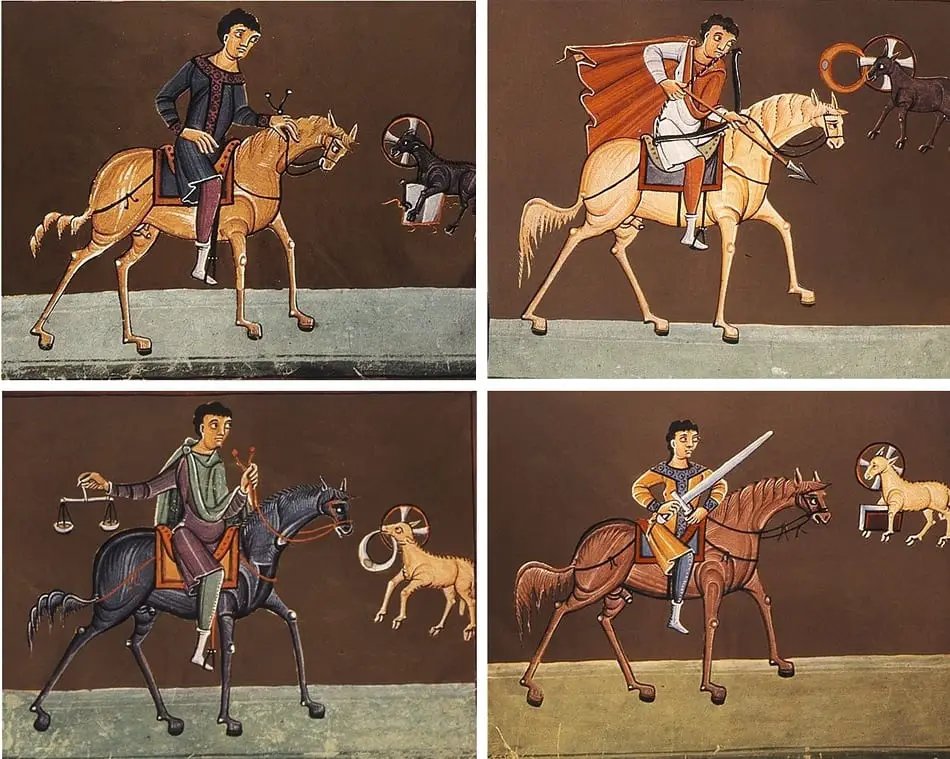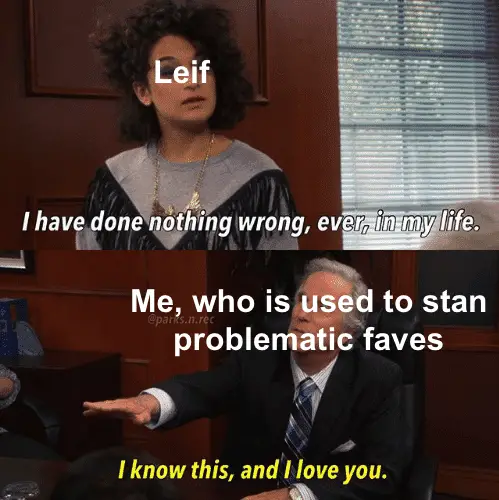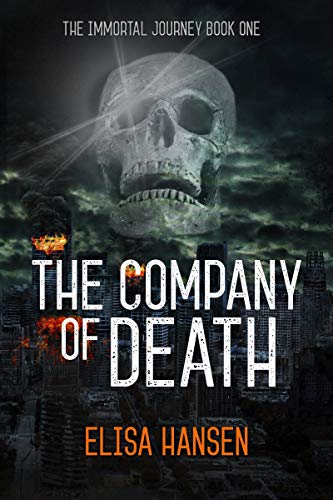The Company of Death is the first volume of Elisa Hansen’s trilogy The Immortal Journey. You might have heard of Hansen under another name: Maven of the Eventide. Indeed she has been providing us with vampire media analysis, through a feminist and inclusive lens, for several years now. But she has written a book. A book that does not (entirely) focuses on vampires.
The Company of Death focuses on Death himself as a character. It is not something new but it might be risky. So, is The Company of Death any good? Well, I had a good time, a rather surprisingly good time, reading it. I was getting into this book thinking there was a strong chance I would like it but Hansen managed to surprise me beyond my expectations.
Let’s dive in shall we?
Story
Emily doesn’t exactly live the best life imaginable. That’s bound to happen when you’re living through the end of the world. How does the world end you ask? Well The Company of Death‘s answer is zombies. But since Emily, and mankind in general, are not really lucky, it is zombies plus vampires. The latter found the flesh-eating undead apocalypse to be the perfect time to reveal their existence. So while zombies are roaming for fresh people to eat, vampires are going around “granting” people their protection if they “agree” to become their glorified cattle. They form what is referred to by both humans and vampires alike as vampire communes.
The world might be ending but it hasn’t ended just yet. Most of humanity has joined the undead ranks but that doesn’t mean that the fight has stopped. In the USA, an organization whose headquarter is the now fortified island of Manhattan, is working on getting the country rid of zombies and vampire communes. Emily works for them. With her unit, they are cleaning certain parts of the Californian desert of the zombie presence. And when they get the chance, they try to ambush a vampire commune.
Unfortunately for Emily, she’s really unlucky and her unit’s ambush on a vampire commune turns out very badly. So badly in fact that her all unit is gone. She sees no other option than to kill herself to avoid joining the undead. But, as we already established, Emily is really unlucky and her suicide doesn’t turn out so well. She does get zombified and breaks Death in one masterful stroke.
Now facing the fact that Death, as in the grim reaper, is very real and very not up to the task of reaping people’s lives anymore (Time took his horse—tragic) Emily is thrown into a situation of cosmic proportions. Cosmic indeed because she discovers that there are more mythical beings haunting our world than vampires and zombies. Most notably the four horsepeople of the apocalypse: Death, War, Famine, and Pestilence. (If someone could explain how pop culture at large decided to replace Conquest by Pestilence I would be grateful.) Oh, and Emily is turning into a conscious zombie.

So Emily and Death leave on a quest to make things right again for both of them. Of course they meet other characters that will accompany them on their way. It wouldn’t be a real company otherwise, and after all, we are here facing The Company of Death.
Characters
The characters are really one of the strongest points of The Company of Death. They are well grounded in a universe that isn’t entirely ours (more about this later). They also have enough background and inner life to make sure that spending time with them is never painful, no matter how little you might actually share in common with them.
The main cast is made of three characters: two “humans” and three “monsters.”
The Humans
The two humans are Emily and Scott. Let’s start with the latter because it will be easier. Scott is legitimately my least favorite character. He is an entitled young man, slightly sexist, not very bright, and not very strong. He complains a lot.
We meet Scott scavenging for food and soon discover that he is travelling with the android Carol toward Manhattan were safety and Scott’s sister, who is also Carol’s creator, is. The details of why Scott was left behind when the place he was staying with his sister was evacuated are fuzzy. The only thing we know for sure is that Carol voluntarily stayed with him to protect him. He also recognized his failure to evacuate was his fault. And here is the interesting bit: no matter how much he whines, how much he tries to sexualize Emily (stop checking to guess if she was sexy, she is a rotting corpse now leave her alone), you see the possibility for him to change. He makes both good and reckless decisions several times. His consideration for Carol, for what she is doing for him and how her existence as an android plays in their relation dynamic, increases as the story progress.
So yeah Scott is not my jam, but I see potential in him. I really like that a writer takes the time to create a character that goes against a lot of things I have seen her denounce in the past to give him the chance to grow and be a better person. Whether or not Scott be given the time to grow is another question.
Emily, however, is a character that I really enjoy. She is a young half-Filipina woman doing her best to stay alive and helping making the world livable again. If I was a bit taken back by her stubbornness in refusing to infiltrate the vampire commune at the start, as a materialist I did appreciate her argument that asking someone to accept physical degradation (here meaning accept becoming one of the vampire victims) is akin to accept to be degraded as a person. And I think people who identify as asexual will appreciate Emily’s view on relationships (which aren’t unrelated to the entire vampire business).
But what captivated me the most with Emily is her transformation into a zombie. She becomes a moving dead-body and she might have some of the cravings that go with it. Yet she is still very conscious of everything, still very much herself. Emily is trapped in her mortal flesh no matter what happens to it. She could lose all of her limbs and her senses but she will remain as such for all eternity. I haven’t often seen the idea of immortality, here undeath, being treated as someone being trapped in a dead body forever. Expect for Laura Moon in American Gods, but she was a secondary character in the book. Here we are going through this with Emily.

And you know what? It is properly horrifying and I want more.
The Monsters
In The Company of Death you can see that Hansen has spent years analyzing monstrous figures. Hansen’s non-human characters, that I will refer as monsters for practical reasons, are the highlight of The Company of Death.
You see, I am a bit of a snob when it comes to monsters. Sure I do appreciate when the principle, or the background, of the monster is linked to something inherently human. It can be an emotion that crystalizes, an obsession, a conflict with societal expectations, etc. I do appreciate it. I even think it is a good way to write monsters. But while their monstrosity might be rooted in humanity, a monster must absolutely be past humanity. Otherwise we fall into tropes like fairies being hot humans with pointy ears, or vampires being hot humans with pointy teeth.
Hansen avoids such tropes and gives us monsters who, while related to humanity, are not glorified humans. Hurray! Especially considering that three of her main characters are monsters. Let’s start with Death, because I think his introduction has been delayed long enough.
Death is sadly a he (listen, you know the level of mental gymnastic required to force my brain into thinking “LA Mort IL”?). He is a cosmic force, a cosmic force greatly diminished by the loss of his horse (it seems that Death is just another horse girl), and the general decrease in actual death since the beginning of the undead apocalypse. Sure Death is a bit down, but he is still a cosmic force with cosmic pretensions. His morality is by no means human. It is only linked to his function, a real case of blue and orange morality. But it doesn’t mean that he doesn’t have qualities making him loveable. Turns out he has a dry sense of humor and also a certain loneliness that pushes him toward Emily. I personally think that Death is the great success of this book. He’s scary and alien enough to create unease but equally interesting to be around.
One of the best surprises from The Company of Death was Carol. Carol is the android traveling along with Nick. She is fully equipped to do battle but isn’t just a super mechanical soldier. She is also a super programmed robot with her own mind that might end up having genuine emotions. I must confess that Carol was the character I had the most apprehension about. I am not a great fan of robots generally. While I am a great fan of cyborgs and all the body horror they lead to, I tend to not see the point of creating humanoid robots. We create robot to make our lives easier by delegating dangerous or unwanted tasks to them. In a similar way, we do not require AI to do things we are already capable of doing, we ask them to compensate where our own intelligence is lacking (for calculation and probability for example). Why on earth would you try to give conscience and feelings to something like that? I mean except to create a totally artificial dilemma that could and should have been avoided.
So yeah, I am not entirely convinced by the “robot rights” movement in the book (and I am not sure we are supposed to be convinced by it). That being said, I love the concept of Carol. Carol has been programmed with Scott’s sister personality because apparently The Company of Death takes the road of saying that you can’t just create a personality (thank you). But after this, Carol is left to process character traits given to her without having the memories linked to them. She also has to process them through different means since her mind works in algorithms. Her entire way of being is somewhere in the uncanny valley region and it is extremely interesting to see her and the other characters around her work through this.
But it is time for me to talk about my absolute favorite: Leif. Leif is a vampire with absolutely no morality whatsoever either for humans or for other vampires. He seems to be on a sort of quest to destroy the commune system. Mainly, I suspect, because he is absolutely appalled by the lifestyle. Otherwise Leif is loosely tied to the other characters for most of this first volume. He runs into them, but he seems to know a lot about the different factions “in charge of” the apocalypse. Leif is a self-centered, amoral, whiny monster. He is a delight to read and I can’t wait to have more of him.

Urban Fantasy or SciFi?
Among the things The Company of Death did well was the blend of genre. The premise of a post-apocalyptic world with zombies tends, nowadays, to be closer to Sci-Fi. While the presence of vampires tends to diminishes this, I have seen vampire explained “scientifically” before. And indeed at the beginning of the story, Emily is living in a post-apocalyptic Sci-Fi world, no question. Her employer is looking for a cure for the zombie condition and vampires don’t seem to be soulless creatures of the night but rather blood-sucking monsters. The beginning of the epidemic is linked to a precise date and a precise event. Everything is very scientific.
Hansen pushes the idea a bit farther. It isn’t just post-apocalyptic. It is post-apocalyptic in the future. As you might have guessed from Carol’s presence, The Company of Death does not take place in our era. The event that lead to the zombie invasion happened after today. As a consequence, Emily and Scott are living in a world more scientifically advanced than ours. Androids exists, but so do solar paneled cars, and smartphones as we know them seem to be outdated. So there is no doubt that The Company of Death is, at the very least, part Sci-Fi.
But that’s not all that it is. The presence of Death and his fellow horse girls band, and of Time himself, anchors The Company of Death firmly into fantasy territory. I personally feel a urban fantasy vibe that I tend to like very much. But the argument for cosmic horror, both from Scott’s perception of Death and Emily’s perception of her own situation, could be made. While there is a lot of humor in there, the book also delivers genuinely horrifying moments.
Sure, The Company of Death isn’t faithful to a genre, but it is clever enough to use the codes of several ones and still do what it is supposed to do (make me care for the characters and for the plot) quite admirably. In this case why on earth would Hansen have limited herself to just one genre?
First Act or First Volume?
That being said I do have an issue with The Company of Death. I do not think the story was enough to be one volume. Sure, there is an arc present in there, a character arc for both Death and Emily to set them on their Manhattan mission, but still. This is the first act of a story, not the main arc of an entire book.
Hear me out on this. Even when you publish a story in several volumes those volumes should have their own internal story. It might not be obvious but volumes should not be cut at random. They end where they end for a reason. They revolve around their own main arc. The arc present in The Company of Death is not sufficient, in my view, to carry its own book. If character development is as important as plot development, I got the impression of having read the end of the introduction to a story, not the first story in a trilogy. That being said The Company of Death is already 324 pages long so I might guess why they decided to cut it here. But commercial considerations do not excuse it entirely either.

Conclusion
In conclusion, I warmly recommend The Company of Death, especially for the monster lovers among you. It is still a very strong first novel despite its little “Act Vs Volume” issue. Sure, it might leave you wanting more, and not in an entirely satisfying way, but still I have seen books with worse issues.
Give it a try if you are tempted, chances are you are going to like it.

